Creative reuse and digital collections
Posted on 13 February 2015 by Thomasin
Here at DigitalNZ we’ve been circling the problem of creative reuse of digital collections for a number of years now. Needless to say, it’s a tricky one.
We’ve run competitions to encourage and celebrate the reuse of openly licensed content: Mix & Mash, and most recently, GIF IT UP, a GIF-making competition we ran with the Digital Public Library of America. Whilst these have been successful and people have made excellent entries, we’ve often run up against problems.
This blog post is intended for those working on, or interested in, online heritage collections and the reuse of digital content more generally. It moves from a wide-view discussion on why digital collections should accommodate reuse and remix, to a few suggestions on how this can be done. We’re really going to dig into this particular step of the Digital Content Life Cycle:
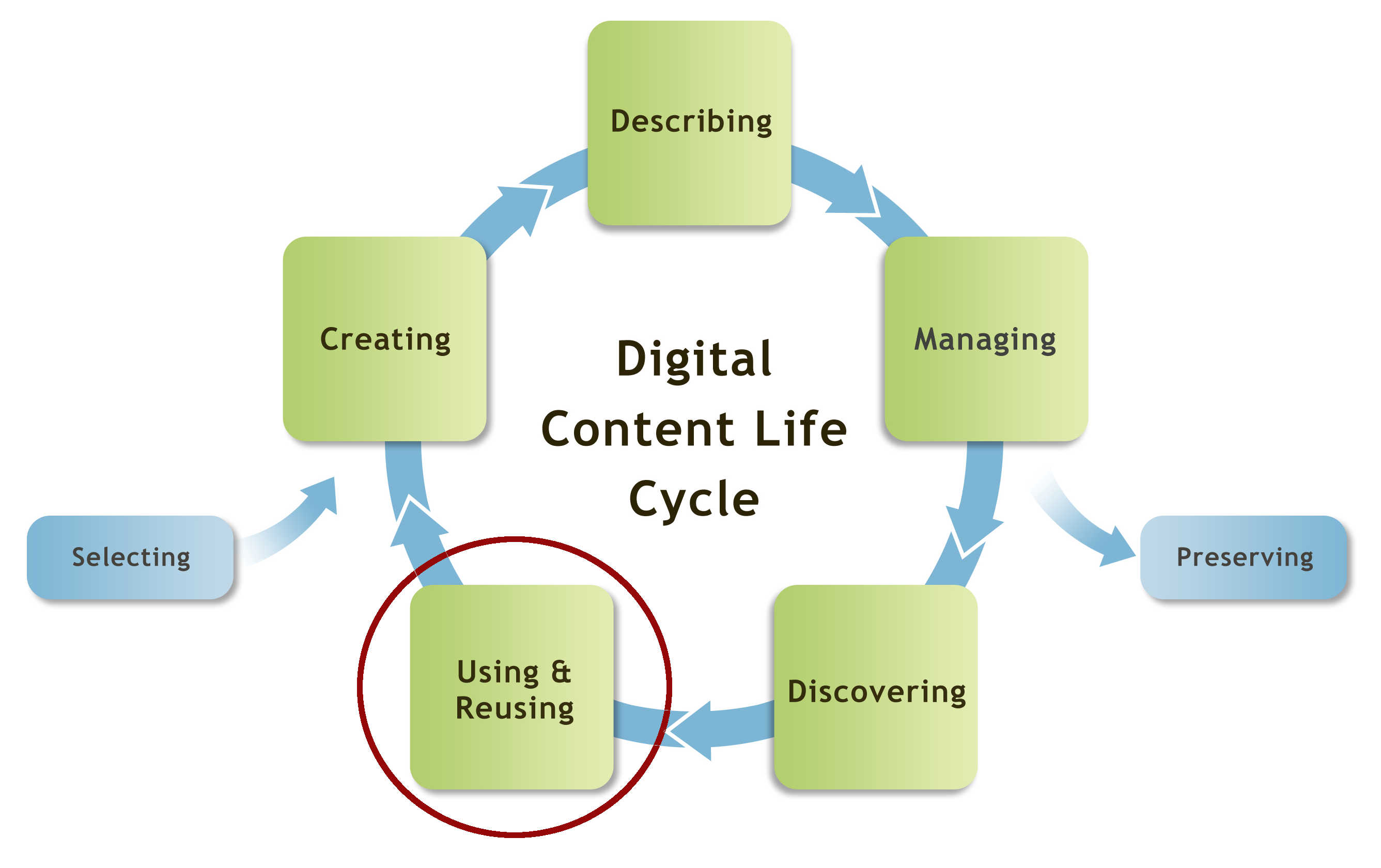
Going places
Digitising and making a collection accessible online is gifting it another kind of life. This material can go places, and exist in ways that are impossible for physical collections. Easily transferrable to blogs, Facebook profiles, Tumblr sites, and other online avatars; digital collections drift around the web and through people’s online lives in an ephemeral and transient way that is very different from visiting a physical space and viewing a static object or image.
As collections have been digitised, enthusiastic online communities have sprung up to share and comment on the material. Ironically, often the self-generated online communities are more successful than the institutional ones. Facebook pages such as ‘Old Wellington Region’ and ‘Old Invercargill’ are like bustling noticeboards: people commenting on old images of their suburbs, debating dates, and sharing stories.
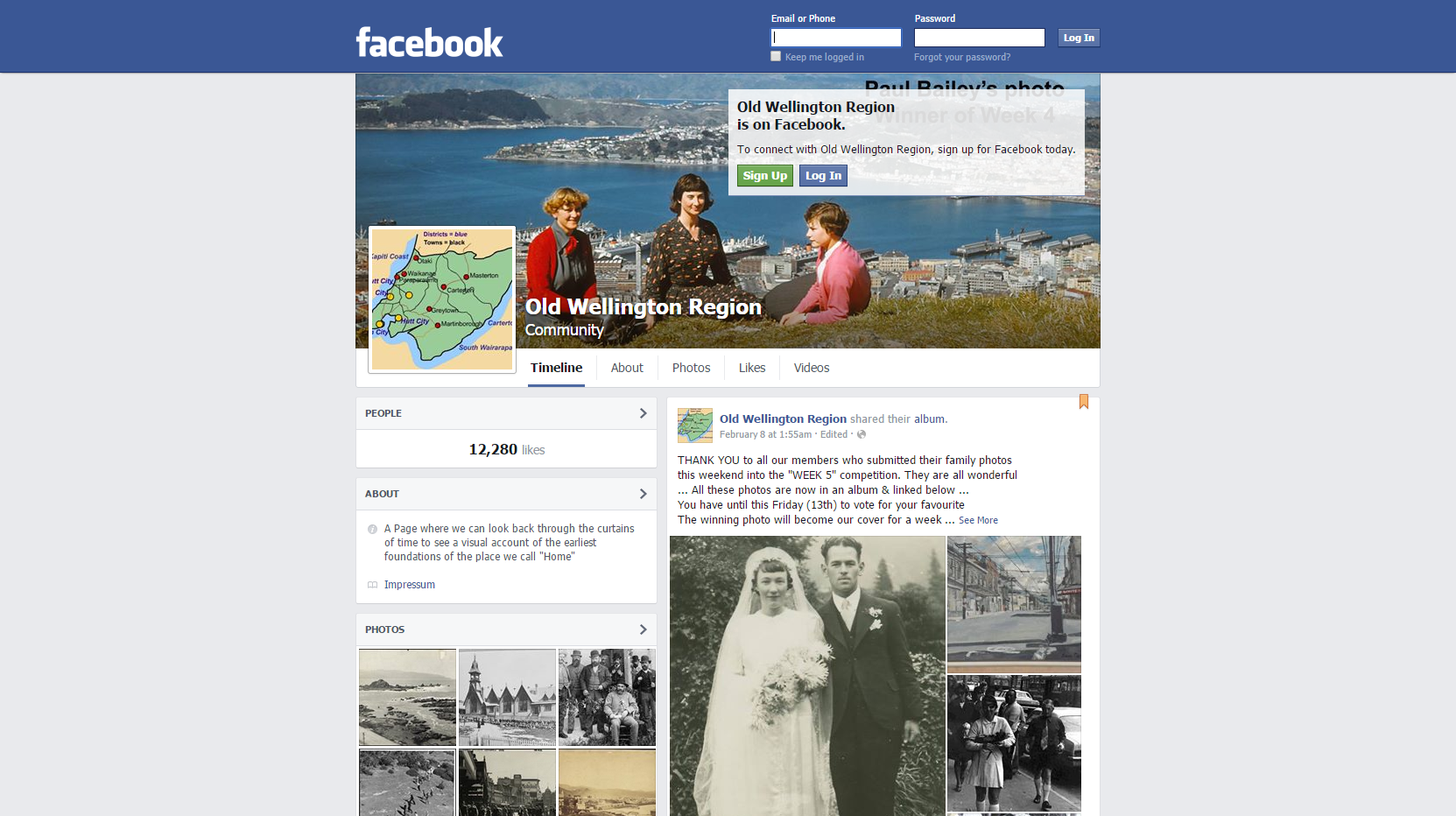
We see this kind of dynamic, independently generated sharing as the activity that makes an online collection come alive. This is surely the behaviour that collecting institutions want to encourage? To enrich the lives of people and make it easy for them to share material that connects them to their whakapapa, their family, and their history. We want this to happen, yes? Yes!
Creative reservoir
Not only can digital collections be shared, but they can also be animated, colourised, cropped, overlaid, distorted, and edited in many different ways. These activities are simple now with digital technologies and there are flickerings of interest as creative people turn towards online archival collections as raw material for their projects.
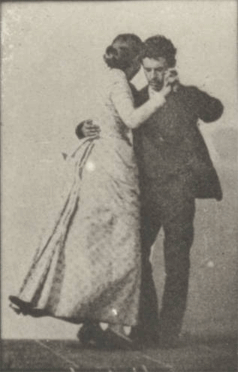
Nono Burling, 'Man and Woman Dancing'. Source material University Southern California Libraries. CC-BY.
Institutional collections have not traditionally been reusable in this way, and this is relatively new role for them to assume. Of course, budding artists would visit galleries to copy the old masters, and contemporary art in the last couple of decades has seen an ‘archival turn’ where artists have often delved into and responded to archival collections in their work.
But an institutional collection operating as a digital reservoir of easy-to-access material to remix, reuse, and co-create with, is a new concept and one which is rich with exciting potential; it could mean an entirely new audience for collecting organisations, one which breathes new life into archival material and generates meaning in fresh and intuitive ways.
Protection, privacy, and kaitiakitanga (guardianship)
We recognise that there are complex cultural, social, economic, and legislative frameworks that surround online collections, as well as many painstaking hours that go into the describing, digitising, and preserving of material. We don’t want to flippantly elide these important issues and firmly believe in reuse that respects the rights of the subjects, kaitiaki, donors, institutions, and remixers.
However, we do want to recognise the moment that we live in: people are sharing, posting, remixing, and swiping their way through digital information, and digital collections are blossoming and proliferating across the web. How can we truly harness the potential of this space and engage actively with creative communities? The following section provides some practical suggestions:
Copyright
Much of this discussion depends on copyright and making digital collections licensed for reuse. This issue is obviously complicated but we’ve put together some key pointers on how to avoid problems we’ve identified when running Mix & Mash and GIF IT UP:
Embed a discussion of copyright and the kind of life your institution envisages for your online collection at the beginning of your digitisation project.
Generate usage statements that are clear, simple, and consistent [this single step is the topic for another blog post].
Include usage statements with your digital material.
If material is out of copyright, ensure it is clearly identified as out of copyright in its digitised form.
Get to know Creative Commons and apply their suite of modular licenses as appropriate.
If you are syndicating your content to other institutions, ensure they are stipulating the same rights statements as you are. As an aggregator, we often see duplicates of material with different rights.
Make use of the Make it Digital guidance on enabling reuse, including the Copyright Status Flowchart and the Public Domain Guide.
Talk to us, talk to your colleagues, post a question on the NDF discussion board , there’re plenty of people out there who are happy to help and who may have solved a similar problem to the one you are grappling with.
Attribution
A hard truth: people don’t care that much about your institution, they just care about the stuff they can get from you and what they can do with it. However, attribution is an important scholarly and digital literacy that allows people to track back to the source, often a site that will have more contextual information about an item.
We’ve found that the most effective way to ensure attribution is to make it incredibly easy for people. Include a short statement such as ‘If you’re going to reuse this item please include this attribution: [your attribution here]’. Then people can simply copy and paste this straight into their project.
Te Papa do this clearly with their open and downloadable images:
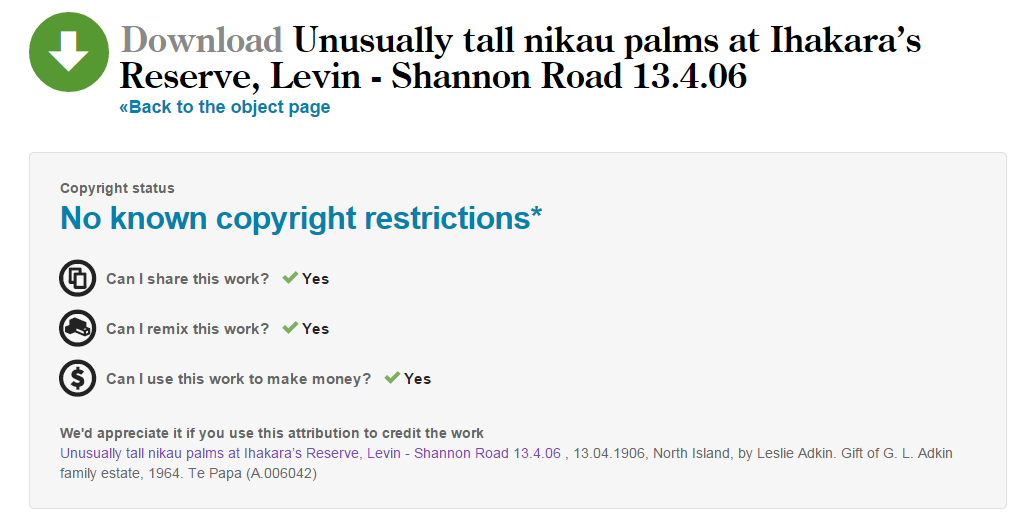
Resolution
Whilst we’ve been running GIF IT UP and Mix & Mash, we’ve also discovered that there’s no point asking people to remix material and make cool stuff if they can’t get hold of material at a high resolution.
If you decide you want to engage with the creative community, make your material downloadable at a quality resolution, as this will infinitely increase the places it can go and the new lives it can take on.
Curation
During GIF IT UP we experimented with curating sets of openly licensed material for people to search through. This was a great way to funnel people towards images and other content that they could be confident was free to remix and modify.
You may have identified a tranche of your digital collection that is out of copyright and ripe for remixing. Why not bring it all together and promote it as such, so that people don’t have to search through your entire online collection. You could do this on your own site, or, if your institution’s collection is aggregated by DigitalNZ, you could simply use the DigitalNZ’s sets to curate this content into a collection. If you’re not yet a DigitalNZ Content Partner, and you are have NZ related digital collections, then do get in touch!
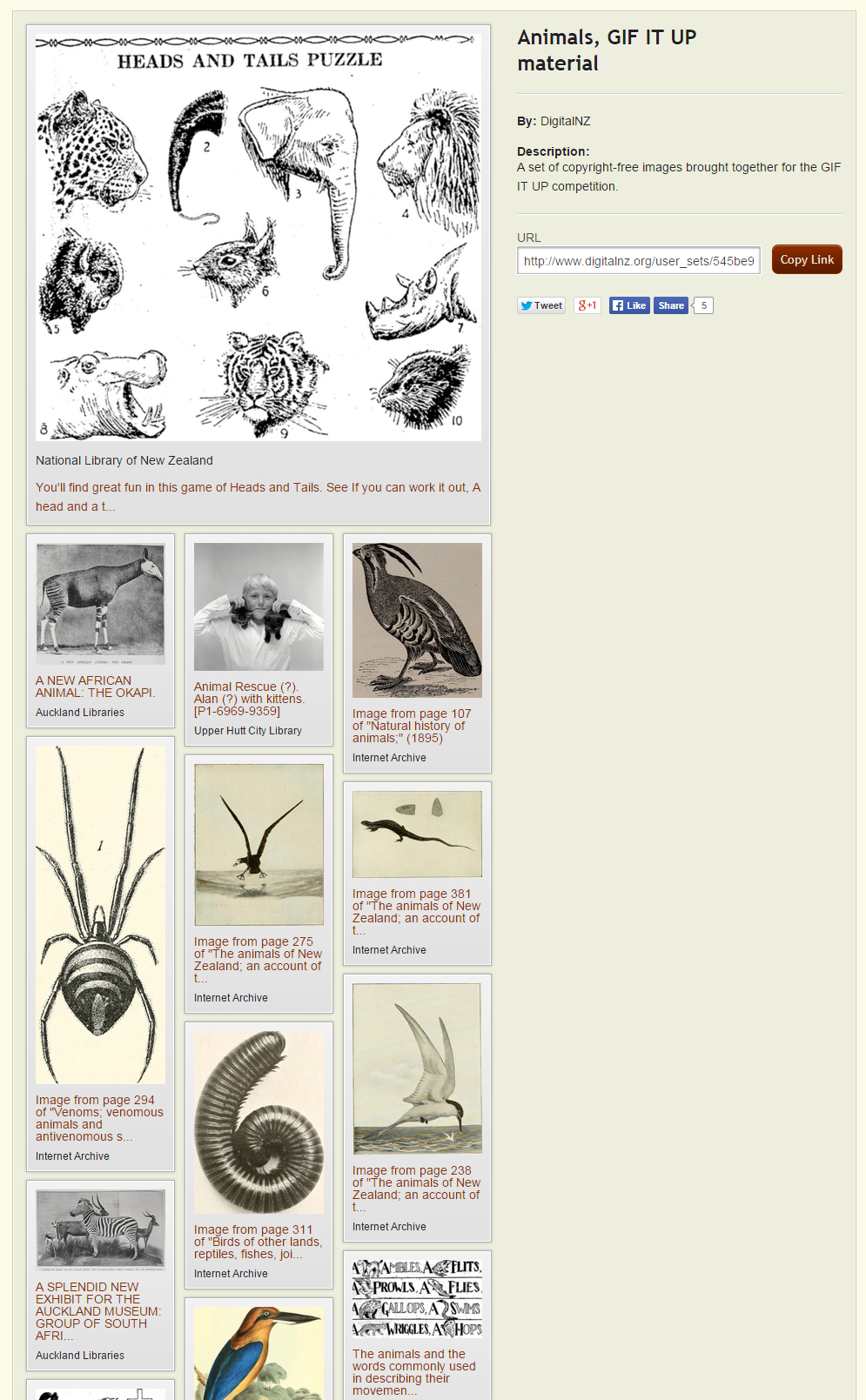
Final thoughts
Running competitions like Mix & Mash and GIF IT UP have caused us to look closely at these issues and also our work as an aggregator implicitly encourages us to take a cross-sector view.
Looking into the future we truly believe there is huge potential for institutions with digital content to have a collaborative and exciting relationship with creative communities in ways which we may not even be able to envisage yet.
But are we completely barking up the wrong tree? Do these issues resonate with you? We’re keen to get your feedback and hear if you have any other ideas about how to traverse the space between collecting institutions and creative communities. Please post a comment here, on Facebook or Twitter, or email us at info@digitalnz.org.
Comments
Comments have been closed for this post
Hi Niall, thanks very much for reading this piece and your comment. All of this thinking informs DigitalNZ's remix work, which we hope to develop more in the future. Great to see your fascinating use of the Europeana API too.
--Thomasin • 2016-01-18 00:00:00 UTC
We've turned off comments here, but we'd still love to know your thoughts. Visit us on our Facebook Page @digitalnz or on Twitter @DigitalNZ to share any ideas or musings with the DigitalNZ team.